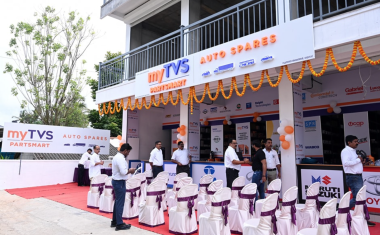
India : The aftermarket offering grows and evolves

With 45 million vehicles on the road, 35 million of which are owned by individuals, India has the lowest car ownership globally, with 33 vehicles per 1,000 people. However, the country is becoming increasingly attractive to automobile manufacturers seeking to reduce their reliance on China: Automotive India is in the making.
While two-wheelers represented 80% of the vehicle fleet in 2020, passenger cars are gaining ground with a 13% market share, driven by the expanding middle class. Nevertheless, in the 2022-2023 financial year, nearly 16 million two-wheelers were sold compared to a relatively modest 3.8 million cars. Overall, the average age of the vehicle fleet is estimated to be between seven and eight years, well below the 12-year average in Europe. This is explained in part by a growing fleet and a significant number of first-time car buyers.
Expected tripling of the aftermarket
This target is identified as credible by aftermarket manufacturers, as they anticipate that the country’s rate of car owner-ship will accelerate with the expected improvement in the standard of living for a significant portion of India’s 1.4 billion people. This acceleration is expected to lead to the rapid structuring of after-sales services. According to the Association of Automotive Component Manufacturers (ACMA), the aftermarket generated $10.6 billion in 2021, and some analysts (YCPS Marketing and Communication Group) estimate that it could triple by 2026.
The maintenance chain for this growing fleet is expected to be shared with 44% handled by manufacturer networks, 53% by completely independent workshops, and a small 3% by multi-brand garages (source: YCP Solidiance Research & Ana- lysis). However, observers anticipate a significant transformation in the Indian after-sales sector, as its structuring is already underway. A profound movement is also changing the parts business, with the rise of private labels, which, according to Sridharan Muralidharan, president of Mobility Aftermarket, "could largely contribute to eradicating the grey market," according to Motorindia magazine.
Digital transformation
Another transformation set to reshape the aftermarket landscape is digitalisation. A key player in this paradigm shift is the TVS group, which reported $3 billion in revenue in 2022. As a member of Nexus Automotive International, the group launched the first national digital automotive platform, “myTVS PartSmart”, in 2020 through its Rechange Ki Mobility Solutions structure. This platform offers on-line access to parts from a comprehensive electronic catalogue, referencing 85 brands. PartSmart, however, is not just a parts platform but also a mediation site. In addition to facilitating part access, the application ensures transparency to reassure suppliers.
With 600 connected stores currently, the group anticipates that its network will ex- ceed a thousand in 2024, covering 18 states in India. The TVS group, an Indian leader, boasts nearly 35,000 partner garages across the country via its MyTVS network. In 2024, the group expects PartSmart to contribute approximately $350 million to its total turnover of $800 million generated by its parts and service division, almost doubling compared to the 2022-2023 financial year.
Retrouvez la version en Français : Inde : L’offre aftermarket croît et mute












